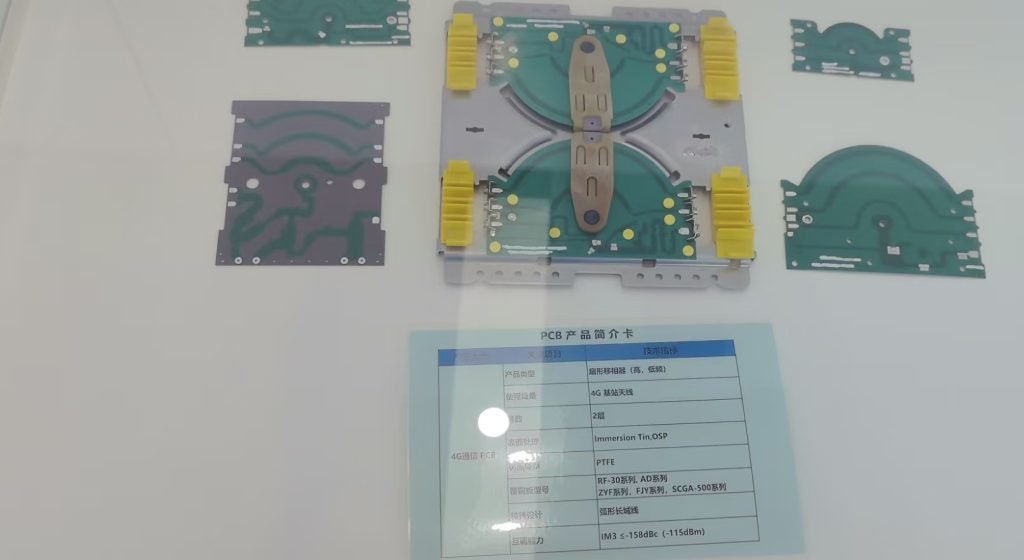5G PCB technology is driving the evolution of electronic devices towards higher speeds and lower latency.
As the core carrier for signal transmission, the performance of PCB directly determines the operational efficiency of 5G networks.
Compared with the 4G era, the millimeter wave frequency band of 5G have imposed even more stringent requirements on the signal transmission of PCBs.
Not only do they need to carry signals of higher frequencies,
But also they have to deal with the interference problems caused by multi-channel parallel transmission.
Characteristics materials
To address the problem of high-frequency signal attenuation, 5G PCBs place greater emphasis on selecting materials with low dielectric constant (Dk) and low dielectric loss (Df).
For instance, materials such as modified PTFE and ceramic-filled resins can effectively reduce the energy loss of signals during transmission, to ensuring the stable transmission of high-frequency signals.
Meanwhile, the wiring design of the PCB has become more refined.
By adopting technologies such as equal-length wiring, differential pair impedance matching, and optimization of the ground plane, the crosstalk between signals and electromagnetic radiation will be reduce, thereby improving signal integrity.
Production and Design of 5G PCB
Under the trend of miniaturization of equipment, 5G PCB also needs to achieve high-density integration.
HDI (High-Density Interconnection) technology increases the line density within a limited space through micro blind holes and layer designs, meeting the signal connection requirements of multi-antenna and multi-band modules.
The advanced laser drilling technology can achieve smaller hole diameters, further enhancing the flexibility of wiring.
In addition, the heat dissipation performance of the PCB has also been given significant attention.
The application of high thermal conductivity materials and the design of heat dissipation channels can prevent the problem of excessively high temperatures caused by the increase in signal transmission power, ensuring the long-term stable operation of the equipment.
The application of 5G PCB
From base station antennas to smart phones and IoT terminals, the signal transmission technology of 5G PCBs has continuously made breakthroughs, providing a solid hardware support for the high speed, low latency and wide connectivity features of 5G networks, and driving the continuous evolution of the digital communication era.
